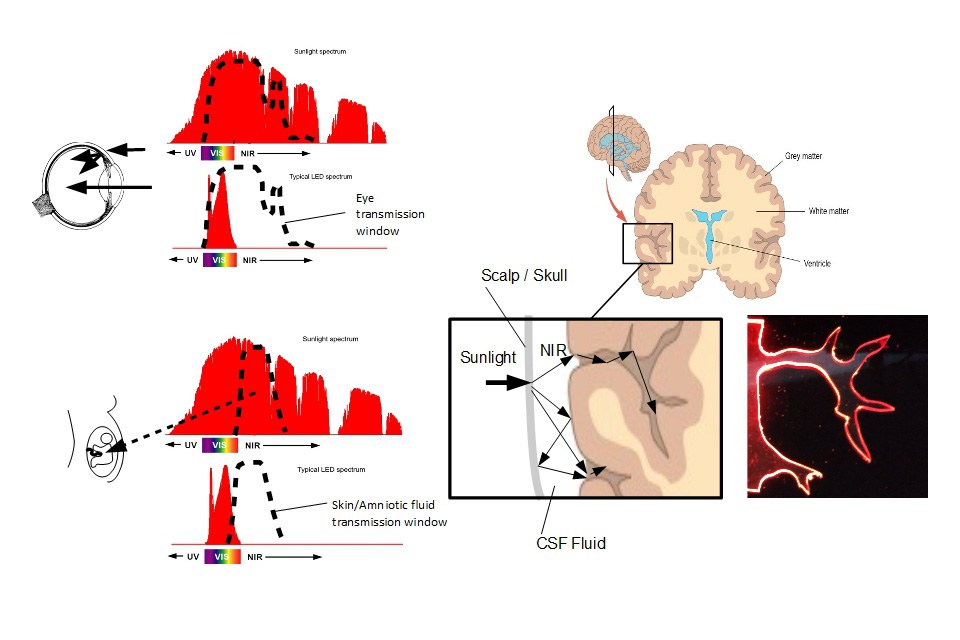3D Bio-Optical Models Reveals How the Human Body Uses the Entire Solar Spectrum
History teaches that global changes to the public's environment mandate a higher level of scrutiny to ensure that we first do no harm. In "Melatonin and the Optics of the Human Body" published in the journal Melatonin Research, Zimmerman and Reiter combine optical ray tracing from lighting and ESR data from the medical industry to model for the first time the 3D free radical distributions generate by lighting sources in the human body.
The article suggests how the interaction between melatonin and sunlight may play a much broader role in our health than existing circadian theory suggests. The 3D bio-optical models show that Near Infrared (NIR) uniquely interacts with the majority of adult cells and up to 100% of the cells in the fetus and young children. The work supports the premise that the body assumes that we are exposed to predominately NIR emitters (Sun, moon, fire) and that the body uses NIR to protect us from the damaging effects of the UV and Visible. The absence of NIR in visible only emitters (LED, OLED, CFL) appears to lead to higher oxidative stress and may provide a direct link to diseases that are on the rise in modern society.
The optics of the eye, womb, skin, and brain are shown to collect and localize NIR in some of our most sensitive tissues. The recent realization that mitochondria produces melatonin in virtually all cells in quantities that are orders of magnitude greater than the amount produced in the pineal gland supports instead the existence of a subcellular melatonin reservoir stimulated in part by NIR.
Ironically for the last 60 years, the public has been exposed to therapeutic levels of NIR by incandescent bulbs in their homes mediating the possible negative impact of fluorescents and supporting better sleep. This is no longer the case. The elimination of NIR from modern society is occurring not only because of visible only LED lighting, but also via low E glass (blocks NIR) and concerns over skin cancer reducing time in natural sunlight. In a sense a perfect storm has been created.
Based on this work, a review of the literature, and the lack of research into the biological impact of visible only emitters, the article suggests that it is time for the lighting and medical community to work together.
Free access to the article is available with registration at: http://melatonin-research.net/index.php/MR/article/view/19
About Melatonin Research Journal:
Melatonin Research is an open access blind peer review academic journal which provides a platform for all researchers who can freely exchange their ideas, research experience and study results in melatonin and/or its related research fields. Melatonin Research fully considers publications of original scientific results from basic to applied research work as well as hypotheses and reviews.
Further discussions on this topic was also available and posted on the IES technical forum FIRES.

